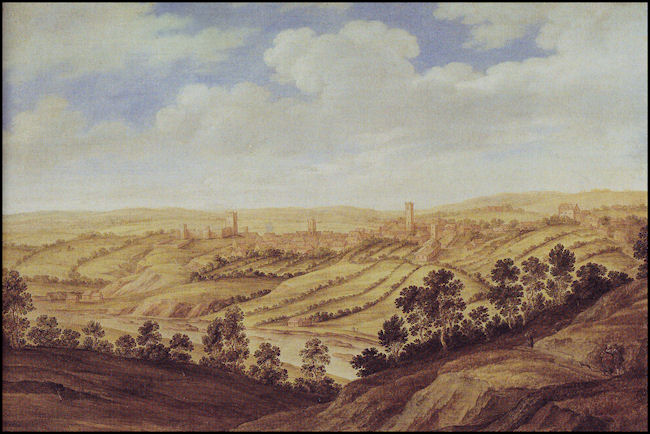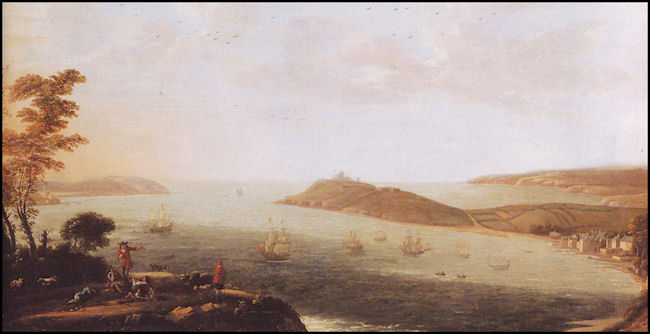

Alexander Keirinx; 1600-1652: Richmond, Yorkshire
When we ask why the
term 'landscape' has become so beguiling we have to concede that the terms
'place' and 'environment' cannot be endowed with the necessary richness that
humanity demands of its surroundings.
A measure of this mental richness is that landscape as an area for
academic study has treated scenery from two standpoints: as visual images, e.g.
Landschaftsbild, and as 3-dimensional space. As practical methods of landscape
evaluation, psychological approaches were introduced in the first stage,
followed by socio-economic approaches. The former aimed to explore values of
landscapes by translating visual perception into physical quantities while the
latter aimed to explore the relation between physical characteristics of
landscapes with scales of values recognized by human beings.The
problem in using 'landscape' to encompass a multidisciplinary mindmap is
that the term originated in the 17th century to classify a new kind of painting
representing an expanse of scenery that can be seen in a single view. It was then applied to other vastly
different situations:


John Piper (1977) Shadwell Park. Screen print
The above print is one of a portfolio of 8 screen prints sometimes known as Victorian Dream Palaces and other buildings in landscape.
John Piper the artist says: An American journalist visiting an English country hoiuse in the middle of the nineteenth century wrote:
"With the whold visible horizon fenced in for the enjoyment of a household of which I was a temporary portion, and no enemy, except time and the gout, I felt as if I had been spirited into some castle of felicity and had not come by the royal state coach at all".
These 'castles of felicity' or 'dream palaces' , whether they were inhabited by Fairy Princes or Princesses presiding with benevolence over the neighbouirhood or by Wicked Ogres produced by the Industrial Revolution, reached the peak period of their construction in the 1870's. The peak period of their destruction is probably the 1970's, and this destruction was documented in a big exhibition at the Victoria and Albert Museum a couple of years ago. Those that I have visited and drawn still exist.
This Web Page Created with PageBreeze Free HTML Editor